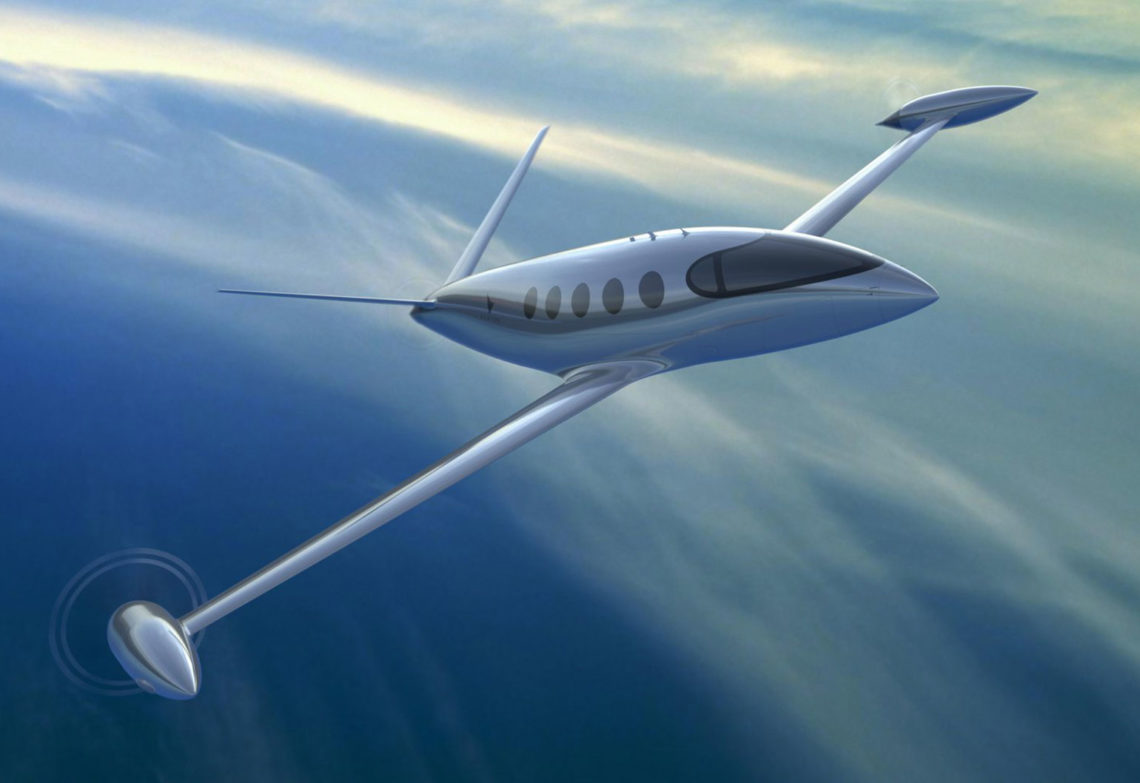Long-haul electric flights are still a fair way off, but companies are setting their sights on electrifying shorter air routes.
Limited battery life and mechanical engineering challenges have held back all-electric long-haul flights. Some companies are taking intermediate steps; for example, Rolls-Royce is working with Airbus and Siemens on the hybrid electric and gas turbine E-Fan X, expected to take to the skies next year.
But full electrification of shorter flights could take place in the next three years, according to Israeli startup Eviation. The company recently launched a prototype of their nine-passenger electric commercial aircraft – endearingly named Alice – at the Paris International Airshow.
Eviation’s CEO, physicist Omer Bar-Yohay, said during a press conference that he expected to receive US Federal Aviation Administration (FAA) certification for the aircraft by late 2021, and start delivering to customers in the following year.
Alice won the Gold Award for Electric Propulsion in the Edison Awards in April. At the Paris International Airshow, Eviation announced that US-based regional airline Cape Air had placed a “double-digit” order for the aircraft, which are estimated to cost US$4 million each (AU$5.7 million).
Shorter flights a lucrative market
Roughly 2 billion tickets are sold for flights under 805 km each year, according to Roei Ganzarski, CEO of magniX, which worked with Siemens to build Alice’s three electric motors.
“We’re not an environmentalist company, the reason we’re doing this is because it makes business sense,” he said.
Ganzarski said electric flights would be much cheaper than their fossil-fuelled counterparts. The cost of fuelling a 160 km flight in a small conventional aircraft is about US$400 (AU$570), while in an electric plane it would be US$8-12 (AU$11-17), he added.
Each of Alice’s three motors deliver 260 kW of power. According to the Eviation website, the aircraft will have 900 kWh of lithium-ion battery storage and a range of 1046 km between charges. This would cover the flight distance between Sydney and Melbourne (700 km), but fall short for Darwin to Alice Springs (1290 km).
Rolls-Royce is also planning to test a short-haul electric plane, dubbed ACCEL (Accelerating the Electrification of Flight), in 2020. They aim to reach speeds of more than 483 km/h in order to beat Siemens’ electric-flight speed record of 338 km/h.
And Rolls-Royce’s acquisition of Siemens’ eAircraft electric propulsion business puts them in a good position to succeed.
According to the Rolls-Royce website, ACCEL has a range of 322 km between charges, which would get you from Sydney to Canberra with 80 km to spare.
Retrofitting for cleaner flight
The motors developed for Alice could also benefit existing aircraft. Gansarski said that as well as fitting “clean sheet” aircraft, they could also be used to retrofit those built for conventional fuel.
Closer to home, WA-based company Electro.Aero is also helping aviators transition from fossil-fuel to electric propulsion systems. As well as changing out engine hardware and software, the company also replaces conventional open propellers with their proprietary carbon fibre electric ducted fans. According to the company website, ducted fans are safer than open propellers and increase efficiency by up to 50 per cent.
Electro.Aero is also operating a European-made, two-seater Alpha Electro, which in January last year became the first electric light sports aircraft to be licensed and flown in Australia. It is now being used to train local pilots.
Mechatronic engineer Joshua Portlock, Electro.Aero founder and current CTO, hopes in the future to electrify the Rottnest Island Air Taxi service.
“I knew it would take a lot of engineering effort and time to develop and certify electric passenger aircraft. So I started Electro.Aero in 2014 to start researching and working on the technology and regulations needed to make electric aircraft a reality,” he said.
“It’s starting in the small class of recreational aircraft. Then it will work its way up to small charter aircraft and then bigger regional aircraft.”



